| Weight | 1 lbs |
|---|---|
| Dimensions | 9 × 5 × 2 in |
| host | mouse |
| isotype | IgG |
| clonality | monoclonal |
| concentration | 1 mg/mL |
| applications | ICC/IF, WB |
| reactivity | Clostridium botulinum Toxin B |
| available sizes | 500 µl |
mouse anti-Clostridium botulinum Toxin B monoclonal antibody (B363M) 8183
$620.00
Antibody summary
- Mouse monoclonal to Clostridium botulinum Toxin B
- Suitable for: ICC/IF,ELISA,RIA
- Isotype: IgG
- 500 µl
mouse anti-Clostridium botulinum Toxin B monoclonal antibody (B363M) 8183
| antibody |
|---|
| Tested applications ICC/IF,ELISA |
| Recommended dilutions ELISA, Immunocytochemistry, Immunofluorescence End users should determine optimal dilutions for their applications. |
| Immunogen Synthetic peptide corresponding to aa 1278-1291 at the C-terminus of Clostridium botulinum Toxin B. |
| Size and concentration 500µL and lot specific |
| Form liquid |
| Storage Instructions This antibody is stable for at least one (1) year at -20° to -70°C. Store product in appropriate aliquots to avoid multiple freeze-thaw cycles. |
| Storage buffer PBS, pH 7.4. |
| Purity immunogen affinity purification |
| Clonality monoclonal |
| Isotype IgG |
| Compatible secondaries goat anti-mouse IgG, H&L chain specific, peroxidase conjugated polyclonal antibody 5486 goat anti-mouse IgG, H&L chain specific, biotin conjugated, Conjugate polyclonal antibody 2685 goat anti-mouse IgG, H&L chain specific, FITC conjugated polyclonal antibody 7854 goat anti-mouse IgG, H&L chain specific, peroxidase conjugated polyclonal antibody, crossabsorbed 1706 goat anti-mouse IgG, H&L chain specific, biotin conjugated polyclonal antibody, crossabsorbed 1716 goat anti-mouse IgG, H&L chain specific, FITC conjugated polyclonal antibody, crossabsorbed 1721 |
| Isotype control tbd |
| target relevance |
|---|
| Protein names Botulinum neurotoxin type B (BoNT/B) (Bontoxilysin-B) [Cleaved into: Botulinum neurotoxin B light chain (LC) (EC 3.4.24.69); Botulinum neurotoxin B heavy chain (HC)] |
| Gene names botB,botB |
| Protein family Peptidase M27 family |
| Mass 150803Da |
| Function FUNCTION: [Botulinum neurotoxin type B]: Botulinum toxin causes flaccid paralysis by inhibiting neurotransmitter (acetylcholine) release from the presynaptic membranes of nerve terminals of the eukaryotic host skeletal and autonomic nervous system, with frequent heart or respiratory failure. Precursor of botulinum neurotoxin B which has 2 coreceptors; complex polysialylated gangliosides found on neural tissue and specific membrane-anchored proteins found in synaptic vesicles (PubMed:17167418, PubMed:17167421, PubMed:17185412, PubMed:23807078). Receptor proteins are exposed on host presynaptic cell membrane during neurotransmitter release, when the toxin heavy chain (HC) binds to them (PubMed:14504267). Upon synaptic vesicle recycling the toxin is taken up via the endocytic pathway (PubMed:14504267). When the pH of the toxin-containing endosome drops a structural rearrangement occurs so that the N-terminus of the HC forms pores that allows the light chain (LC) to translocate into the cytosol (PubMed:3856850). Once in the cytosol the disulfide bond linking the 2 subunits is reduced and LC cleaves its target protein on synaptic vesicles, preventing their fusion with the cytoplasmic membrane and thus neurotransmitter release. Binds to host peripheral neuronal presynaptic membranes via synaptotagmins 1 and 2 (SYT1 and SYT2) (PubMed:14504267, PubMed:8144634). Toxin binds to the membrane proximal extra-cytoplasmic region of host SYT1 and SYT2 that is transiently exposed outside of cells during exocytosis; exogenous gangliosides enhance binding and subsequent uptake of toxin into host cells (PubMed:14504267, PubMed:15123599). Toxin uptake into neural cells requires stimulation (incubation with K(+) to stimulate SYT protein receptor exposure); subsequently the toxin colocalizes with its receptor in host cells with a concomitant decrease in target protein (synaptobrevin-2/VAMP2) immunoreactivity (PubMed:14504267). Toxin uptake can be blocked by the appropriate synaptotagmin protein fragments and gangliosides in cell culture and in mice (PubMed:14504267, PubMed:15123599). BoNT/B is a 'coincidence detector'; it requires simultaneous binding to coreceptor GT1b and low pH to transform into a membrane-bound, oligomeric channel (PubMed:21925111, PubMed:22720883). Whole toxin only has protease activity after reduction which releases LC (PubMed:1331807, PubMed:7803399). {ECO:0000269|PubMed:1331807, ECO:0000269|PubMed:14504267, ECO:0000269|PubMed:15123599, ECO:0000269|PubMed:17167418, ECO:0000269|PubMed:17167421, ECO:0000269|PubMed:17185412, ECO:0000269|PubMed:21925111, ECO:0000269|PubMed:22720883, ECO:0000269|PubMed:23807078, ECO:0000269|PubMed:3856850, ECO:0000269|PubMed:7803399, ECO:0000269|PubMed:8144634}.; FUNCTION: [Botulinum neurotoxin B light chain]: Has proteolytic activity (PubMed:1331807). After translocation into the eukaryotic host cytosol, inhibits neurotransmitter release by acting as a zinc endopeptidase that cleaves the '76-Gln-|-Phe-77' bond of synaptobrevin-2/VAMP2, blocking neurotransmitter release (PubMed:1331807, PubMed:7803399). In vitro the LC only has protease activity after reduction (PubMed:1331807, PubMed:7803399). {ECO:0000269|PubMed:1331807, ECO:0000305|PubMed:7803399}.; FUNCTION: [Botulinum neurotoxin B heavy chain]: Responsible for host epithelial cell transcytosis, host nerve cell targeting and translocation of light chain (LC) into host cytosol. Composed of 3 subdomains; the translocation domain (TD), and N-terminus and C-terminus of the receptor-binding domain (RBD). The N-terminus of the TD wraps an extended belt around the perimeter of the LC; it does not seem to protect the active site, but might prevent premature LC dissociation from the translocation channel and protect toxin prior to translocation (PubMed:10932256, PubMed:17167418). Has 2 coreceptors; complex gangliosides found primarily on neural tissue and host synaptotagmin-1 and -2 (SYT1 and SYT2) which bind simultaneously to adjacent but separate sites at the tip of the HC (PubMed:17167418, PubMed:17167421, PubMed:17185412, PubMed:23807078, PubMed:8144634). HC alone partially prevents uptake of whole toxin by neural cells, and delays paralysis onset by 160% (PubMed:10413679). Binding probably positions the TD for integration into the synaptic vesicle membrane (PubMed:17167418, PubMed:23807078). The HC forms channels at low pH that mediate transport of the light chain (LC) from the endocytic vesicle to the cytosol (PubMed:3856850). Binds gangliosides GD1b and GT1b (PubMed:10413679, PubMed:14731268). Gangliosides are not only a coreceptor, but also required for uptake into nerve cells (PubMed:17167418, PubMed:21925111). HC alone binds to host receptor proteins SYT1 and SYT2 (PubMed:14504267, PubMed:15123599, PubMed:17185412, PubMed:19650874). Interaction with SYT1 protein does not require SYT1 glycosylation (PubMed:19476346). The HC C-terminus (approximately residues 1079-1291) interacts with host SYT2 (PubMed:15123599, PubMed:17167418, PubMed:17167421, PubMed:23807078). Has higher affinity for SYT2 than SYT1 (PubMed:17167421, PubMed:17185412). Significantly decreases uptake and toxicity of whole BoNT/B and BoNT/G (PubMed:19650874). {ECO:0000269|PubMed:10413679, ECO:0000269|PubMed:10932256, ECO:0000269|PubMed:14504267, ECO:0000269|PubMed:14731268, ECO:0000269|PubMed:15123599, ECO:0000269|PubMed:17167418, ECO:0000269|PubMed:17167421, ECO:0000269|PubMed:17185412, ECO:0000269|PubMed:19650874, ECO:0000269|PubMed:23807078, ECO:0000269|PubMed:8144634, ECO:0000305|PubMed:21925111, ECO:0000305|PubMed:3856850}. |
| Catalytic activity CATALYTIC ACTIVITY: Reaction=Limited hydrolysis of proteins of the neuroexocytosis apparatus, synaptobrevins, SNAP25 or syntaxin. No detected action on small molecule substrates.; EC=3.4.24.69; Evidence={ECO:0000269|PubMed:1331807}; |
| Subellular location SUBCELLULAR LOCATION: [Botulinum neurotoxin type B]: Secreted {ECO:0000269|PubMed:3139097}. Host synapse, host presynaptic cell membrane {ECO:0000269|PubMed:14504267}. Note=Colocalizes with its SYT1 receptor, probably in synaptic vesicles (PubMed:14504267). At pH 4.4 in the presence of ganglioside GT1b becomes a membrane-associated hydrophobic protein (PubMed:21925111). {ECO:0000269|PubMed:14504267, ECO:0000269|PubMed:21925111}.; SUBCELLULAR LOCATION: [Botulinum neurotoxin B light chain]: Secreted {ECO:0000269|PubMed:3139097}. Host cytoplasm, host cytosol {ECO:0000305|PubMed:1331807, ECO:0000305|PubMed:8144634}.; SUBCELLULAR LOCATION: [Botulinum neurotoxin B heavy chain]: Secreted {ECO:0000269|PubMed:3139097}. Host synapse, host presynaptic cell membrane {ECO:0000269|PubMed:14504267}. Host cytoplasmic vesicle, host secretory vesicle, host synaptic vesicle membrane {ECO:0000305|PubMed:21925111}; Multi-pass membrane protein {ECO:0000305}. |
| Structure SUBUNIT: Heterodimer; disulfide-linked heterodimer of a light chain (LC) and a heavy chain (HC) (PubMed:1331807, PubMed:3139097). At pH 4.4 in the presence of ganglioside GT1b may form trimers (PubMed:21925111, PubMed:22720883). Interacts with host receptor synaptotagmin-1 (SYT1); interaction is improved in the presence of gangliosides (PubMed:14504267, PubMed:19650874, PubMed:8144634). Interacts with host receptor synaptotagmin-2 (SYT2) (PubMed:14504267, PubMed:15123599, PubMed:17167418, PubMed:17167421, PubMed:19650874, PubMed:23807078). SYT2 interaction and toxin uptake do not require gangliosides but are improved in their presence (PubMed:14504267, PubMed:15123599). HC interacts with a complex including at least host synaptic vesicle glycoprotein 2 (SV2) and synaptotagmin-1 (SYT1); copurification does not depend on glycosylation of either protein (PubMed:19476346). {ECO:0000269|PubMed:1331807, ECO:0000269|PubMed:14504267, ECO:0000269|PubMed:15123599, ECO:0000269|PubMed:17167418, ECO:0000269|PubMed:17167421, ECO:0000269|PubMed:19476346, ECO:0000269|PubMed:19650874, ECO:0000269|PubMed:21925111, ECO:0000269|PubMed:22720883, ECO:0000269|PubMed:23807078, ECO:0000269|PubMed:3139097, ECO:0000269|PubMed:8144634}. |
| Domain DOMAIN: [Botulinum neurotoxin B light chain]: Has protease activity (PubMed:1331807). {ECO:0000269|PubMed:1331807}.; DOMAIN: [Botulinum neurotoxin B heavy chain]: Has 3 functional domains; the translocation domain (TD) and the receptor-binding domain (RBD) which is further subdivided into N- and C-terminal domains (N-RBD and C-RBD) (PubMed:10932256). HC forms channels in bilayers at low pH (PubMed:3856850). The N-terminal belt of the TD wraps an extended belt around the perimeter of the LC; it is shorter than in BoNT/A and does not block the active site (PubMed:10932256). The belt may be a pseudosubstrate inhibitor which serves as an intramolecular chaperone for the LC prior to its translocation into the host cytosol (PubMed:17907800). {ECO:0000269|PubMed:10932256, ECO:0000269|PubMed:3856850, ECO:0000305|PubMed:17907800}. |
| Target Relevance information above includes information from UniProt accession: P10844 |
| The UniProt Consortium |
Data
| No results found |
Publications
Warning: Cannot modify header information - headers already sent by (output started at /www/benchmarkantibodiescom_769/public/wp-includes/script-loader.php:3015) in /www/benchmarkantibodiescom_769/public/wp-content/plugins/shortcode-manager/shortcode-manager.php(453) : eval()'d code on line 3
Publications
| pmid | title | authors | citation |
|---|---|---|---|
| We haven't added any publications to our database yet. | |||
Protocols
| relevant to this product |
|---|
| Western blot IHC ICC |
Documents
| # | SDS | Certificate | |
|---|---|---|---|
| Please enter your product and batch number here to retrieve product datasheet, SDS, and QC information. | |||
Only logged in customers who have purchased this product may leave a review.
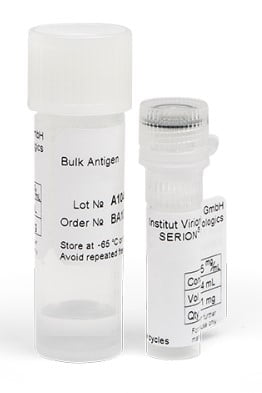
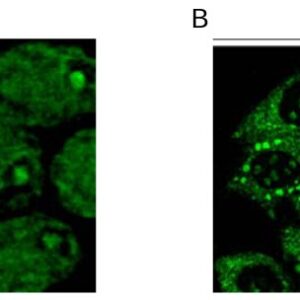

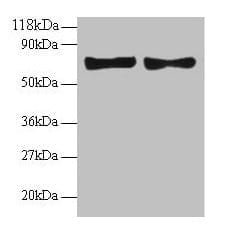
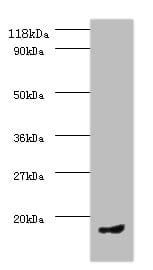

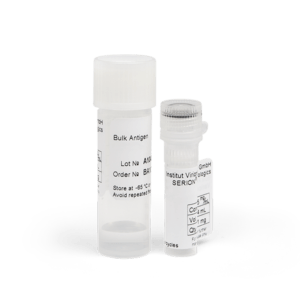

Reviews
There are no reviews yet.